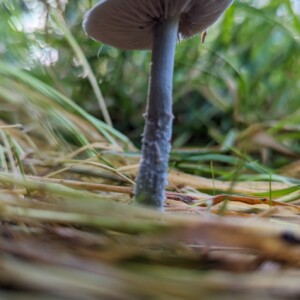Unearthed
The land on which we planted our orchard is ridge and furrow (or "lands", as they were described in my childhood). School history makes everyone think this is a relic of the pre-enclosures, 'three-field system' of subsistence farming under feudal landlords. I have my doubts. Like many of the south Warwickshire fields, the ridges are high and wide, the furrows well over a metre deep, with quite steep sides - a profile not well suited to food crops. I think it is more likely the land was shaped in this way to ensure that, even in a wet winter, at least some of it was dry enough for animals to walk and graze, and the furrows help convey water off the field into the ditch
My guess is that this was done in the 18th or 19th centuries, and that it was seeded immediately back to grass, and has been grazing land ever since - probably mostly sheep, though it has also hosted donkeys in the time since we have owned it. It has thus been undisturbed for many decades, probably centuries. This is perfect for the development of the network of underground filaments that comprise a fungal mycelium. We see the evidence every so often in edible field mushrooms and giant puffballs, along with a selection of small brown fruiting bodies that I'm not knowledgeable enough to identify
This one is a bit of a rarity - about 8cm high and 5 across - larger than most of the 'toadstools' that we get. It was growing under some matted, overgrown grass that I was using to wipe my hands clean of quick-dry 'filler' (the 'wasp wars' are not yet over; they are still gaining entry to the bee shed, then forgetting the way out and dying all over the place - today was the latest skirmish)
Knowing little about fungi, I scanned pictures of common species. The likeliest candidate I can find is the 'Lilac Bonnet' (Mycena pura), but I'm happy to be corrected by someone who really knows. I realise it's not lilac, but all the guides say it does not have to be, and it was growing in extreme shade until I pulled the grass away. If it is a lilac bonnet, they sound interesting: once considered edible but now regarded as poisonous (!!) because they contain muscarine - a complex ammonium salt that is a nerve toxin
The lilac bonnet grows in leaf litter - which figures, as one of my other jobs was chopping back the rampant hawthorn that could damage the shed roof in winter winds. The fungus is said to "smell of radish"; do radish have a smell?! Most excitingly, its gills are "phosphorescent and glow in the dark". I did not bring it home but, if it is still there and I visit again tomorrow, I will do


Comments
Sign in or get an account to comment.


